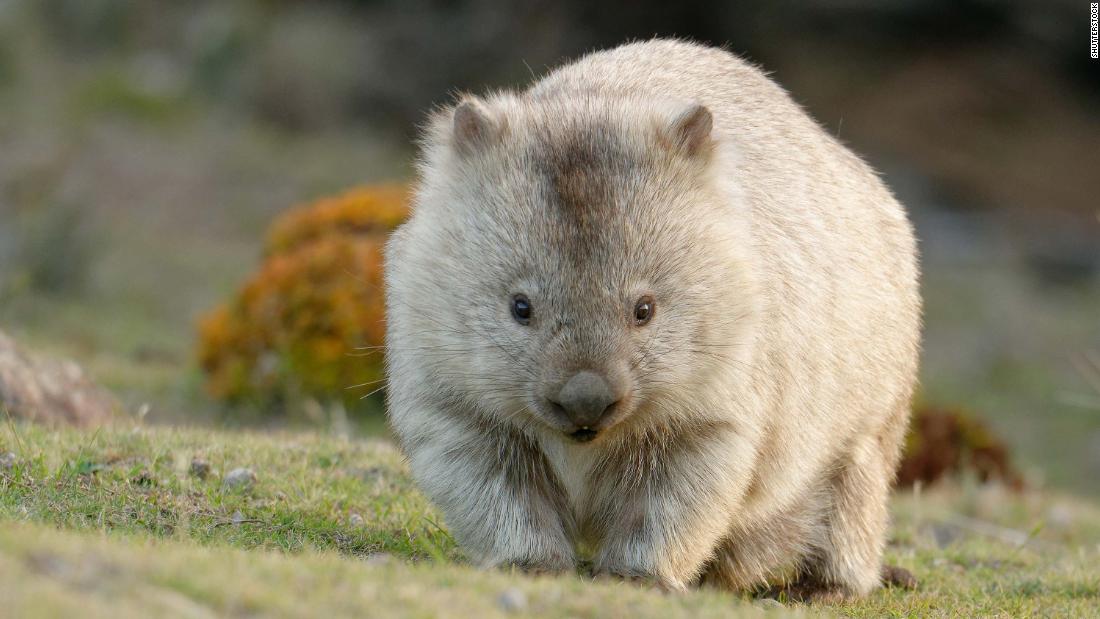
Bare-nosed wombats, or common wombats, can be found in the hilly landscapes of southern and southeastern Australia and in Tasmania.
Fur marsupials are famous for producing distinct cuboid poop, which researchers believe is then tactically dispersed to communicate with each other.
Now, scientists at the University of Tasmania have discovered more about the curious phenomenon.
Using laboratory tests and mathematical models, a team of researchers found that there are two rigid areas and two flexible areas around the circumference of the wombat intestine. The intestine, 33 feet long, is about 10 times the length of a wombat’s body.
“This ability to form relatively uniform and clean feces is unique to the animal kingdom,” Scott Carver, a wildlife ecologist at the University of Tasmania, said in a statement.
“Place these feces in prominent points in their home area, such as around a rock or log, to communicate with each other. Our research has found that these cubes form in the last 17 percent of the colon’s gut.” , he said.
Researchers say that the distinctive shape of the wombat poop cube is caused by the drying of feces in the colon and muscle contractions, which form the uniform size and corners of the poop.
“The bare-nosed wombats are famous for producing a distinctive, cube-shaped poos. This ability to form relatively uniform and clean feces is unique to the animal kingdom,” Carver added.
In humans, food travels through the gut in a day or two, but the digestive process of a wombat can take up to four times longer, so the animal can extract all possible nutritional content from its food. Creatures also produce much drier poop than human feces – because they are better at extracting water from the gut.
Carver said the discovery that the cubes are created inside a soft tube reveals “a whole new way of making cubes,” which could have implications for manufacturing, clinical pathology and digestive health.